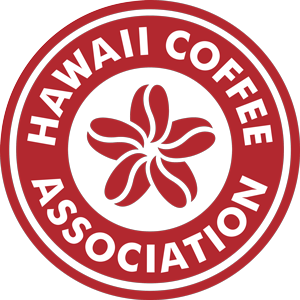KONA KA'U PUNA HAMAKUA
KONA COFFEE: PRIDE IN THE PAST
 Kona coffee’s history is one of resilience and individualism. Planted in 1832 as an ornamental, coffee in Kona took hold as many wished to form commercial ventures. Economic downturns in the latter part of that century, however, caused many to give up coffee and venture into other endeavors. This provided an opportunity for others, largely Japanese plantation workers, who wished freedom from plantation lunas. These made the trek, often by foot, to Kona and the industry was revived.
Kona coffee’s history is one of resilience and individualism. Planted in 1832 as an ornamental, coffee in Kona took hold as many wished to form commercial ventures. Economic downturns in the latter part of that century, however, caused many to give up coffee and venture into other endeavors. This provided an opportunity for others, largely Japanese plantation workers, who wished freedom from plantation lunas. These made the trek, often by foot, to Kona and the industry was revived. It was not an easy task. Pests and economic downturns threatened the industry. The Great Depression of the 1930s took a severe toll on the community and its farms. The economic woes of the mid 1900s hit hard. Many times, Kona coffee was pronounced dead by the experts. Yet the courageous farmers along the Kona Coffee Belt Road made their stand. To deal with the day to day problems of a hostile environment, they formed “kumi,” community support organizations. When unable to obtain financing, they organized their own credit union. When marketing challenges arose, they formed cooperatives. They prevailed; their coffee and the institutions they formed are alive to this day. Coffee still thrives along the twenty mile stretch of Mamalahoa Highway that we call the Kona Coffee Belt. Challenges such as the coffee berry borer, labeling, and marketing still persist, but today’s Kona coffee farmers meet those challenges with the same independence and toughness of their predecessors.
This independence and hard work is reflected in today’s product. Kona is almost exclusively madeup of independent small farms. Kona farmers toil hard to produce the best possible coffee while still maintaining independence. Nuances between the farms carry over to the final product. Therefore, each of the many private labels of Kona coffee has its own unique quality and character that creates pleasant surprises for the coffee drinker. It is aloha in every cup.
__________
Composed of more than 630 farms ranging in elevation from 500′ to 3,000′ (150 to 915 meters), this region defines Hawaii coffee for most people. Kona coffee is internationally known and commands some of the highest prices in the world. Most farms are less than five acres (two hectares) in size and are operated by individual families. The variety Kona Typica is grown almost exclusively here.
By Gerald Kinro
